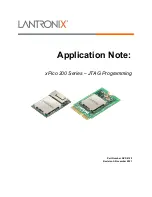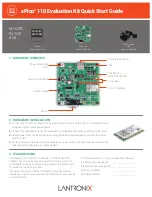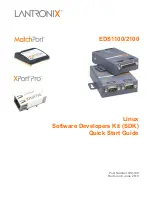
AN118
Rev 1.1 | Page 23 / 31
www.cmostek.com
Sync
The Sync pattern is shown below:
1 SYM
31 SYM
Figure 32. 1527 Sync Pattern
During the reception, the CMT2250A dynamically detects the pattern of the Sync to identify whether a 1527 packet is coming. In
some circumstances, the 31 consecutive 0 (low symbols) can bring challenges into the demodulation and bit synchronization.
Because the 31 zeros come along with some data rate offsets can lead to incorrect counting of the number of zeros during the
reception of the Sync. As a result, the device failed to recognize the packet.
To avoid this happening, the CMT2250A allows the user to introduce some tolerance of detecting these 31 low symbols. This
means the device does not necessarily capture 1 high symbol followed by 31 low symbols to identify this is a valid 1527 Sync. For
example, if +/- 13 symbols of detecting tolerance is introduced to the device, 1 high symbol followed by 18 – 44 symbols can
represent a valid 1527 Sync.
Address (Sync ID)
The Sync ID is sent and received starting from the LSB. For example, if the “Sync ID Value” is set to 1, the binary value of the
Sync ID is “0000 0000 0000 0000 0001”. In this case, bit<0> = 1 is received first and bit<19> = 0 is received at the end of the
Sync ID field.
D0, D1, D2, D3
These are the 4 data bits D0, D1, D2, D3 received to control the data pins. D0 is received first.
5.1.5 1527 Study Packet Structure
The 1527 Study packet contains a 32-symbol Head_S and a 20-bit Address (Sync ID), as shown below.
Head_S
32-symbol
Address (Sync ID)
20 bits
Figure 33. 1527 Study Packet Structure
The Study Packet structure is not illustrated on the RFPDK since there is no option for the user to select. The Head_S indicating
that the current packet is a study packet has the identical pattern to that of the 1920, as shown below:
2
SYM
2
SYM
2
SYM
2
SYM
2
SYM
2
SYM
1
SYM
1
SYM
2
SYM
1
SYM
1
SYM
1
SYM
1
SYM
2
SYM
2
SYM
2
SYM
2
SYM
2
SYM
2
SYM
Figure 34. 1527 Head_S Pattern
5.1.6 1527 Bit Format
In 1527 packet, a single bit is constructed by 4 symbols, as shown below. The user can select the desired value of the “Bit Format”
parameter on the RFPDK. Please note that only the Sync ID field and the D0, D1, D2, D3 field have the unit of “bit”.









































